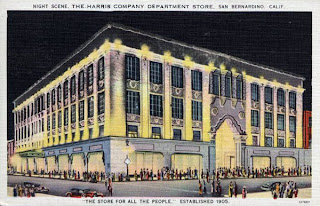
When I heard the Boy Scouts of America were discontnuing the rank of Lion I cried. I joined the Cub Scouts when I was eight. I was a third grader at North Oceanside Elementary School in Mrs. Butler's class.
By that time, the girls were already in their second year of Girl Scouts, as they started Brownies in the second grade. Cub Scouts began one year later. My school didn't have Cub Scouts at the time. There were some older students who belonged to packs (Cub Scouts don't have troops, they have packs) sponsored by service organizations and churches.
We were then attending the First Methodist Church in Oceanside with a neighbor driving us there every Sunday morning. They didn't have a pack.
A woman we knew from church, Claudia Joslyn (whose son Michael was in my class), wanted to start a new pack and be a Den Mother at North Oceanside School. And so it started, meeting in the Joslyn home, about a block from school, in September 1965. We met Tuesday at 4:00 and finished about 5:45. The entire pack was made up of Den 1. That was Pack 710 of Oceanside, California.
Dues were ten cents a week. Once we passed the requirements to be a Bobcat (the first rank) we could wear a uniform. If a Cub Scout came to a meeting without a uniform, there was a fifteen cent fine. You never saw a Cub Scout from Pack 710 wearing jeans with his uniform. Everything had to be official. Mrs. Joslyn and some of the other mothers knew where to get second hand uniforms for a dime or a quarter at the Salvation Army or the Goodwill.
We made crafts. We went on field trips to local cultural, historical, and natural sites. On Saturdays we had activities with our fathers. These were usually barbecues or softball games. (My dad hated sports.)

I passed the requirements for Wolf in record time. I earned one gold and three silver arrow elective points. Most of these were for cooking.
In May 1966 my family moved from Oceanside (near San Diego) to Colton (near San Bernardino). I joined Den 3 of Pack 48, sponsored by Ulysses S. Grant Elementary School, where I attended until the new Paul J. Rogers Elementary School was completed during the 1966-67 school year. Everyone in Den 3 made the transfer to the new school. Most of the members had family members who worked at the Blue Mountain Dairy (located not far from where I lived at the time on Cypress Avenue... I used to get cheap Popsicles there during summer).

My requirements for the Bear rank went well and I earned it quickly. Then we got some bad news: The rank of Lion was going out. So my pocket wouldn't look like the picture above, with the three ranks like that. Instead, it would look like the one below, with only two ranks. It was rather disappointing. Also, the secret meaning of Webelos, the pinnacle rank in Boy Scouts was going to be different, too. We learned that it meant, "Wolf, Bear, Lion, Scout," with some vowels added. The new meaning would be, "We'll Be Loyal Scouts." Actually, that made more sense.
When became ten years old, we wouldn't be in the same den anymore. There was a new Webelos Den. And there were no Den Mothers. Men were now in charge of the show. And now we would be Webelos Scouts, with our own variation of the Cub Scout uniform. And we got to earn neat activity badges. It ended up not being so disappointing.
 Roy Phillips Truck Stop - - Flying A gasoline and Diesel Fuel. We offer unlimited parking for most rigs and a place for Colton High School students to smoke/hang out between classes. Located at the corner of Rancho Avenue and Valley Boulevard (where I Street becomes Valley Boulevard) just immediately outside the Colton city limits, so it takes at least 30 minutes for the San Bernardino County Sheriff's deputies to get to us.
Roy Phillips Truck Stop - - Flying A gasoline and Diesel Fuel. We offer unlimited parking for most rigs and a place for Colton High School students to smoke/hang out between classes. Located at the corner of Rancho Avenue and Valley Boulevard (where I Street becomes Valley Boulevard) just immediately outside the Colton city limits, so it takes at least 30 minutes for the San Bernardino County Sheriff's deputies to get to us. New Colton Theatre - - One of the oldest cinemas in the area, complete with a real balcony. Tonight's film is El bolero de Raquel, starring Cantinflas. Take the Ninth Street exit from the San Bernardino Freeway (I-10).
New Colton Theatre - - One of the oldest cinemas in the area, complete with a real balcony. Tonight's film is El bolero de Raquel, starring Cantinflas. Take the Ninth Street exit from the San Bernardino Freeway (I-10). San Bernardino Valley College Indians Football - - Saturday's games pits the Indians against the Riverside City College Tigers. There will be a special half-time show by the SBVC Marching Band, under the direction of C. Paul Oxley. The game will be at the National Orange Show Stadium and begins at 7:30 PM. Come early and enjoy an exciting pregame show by the band.
San Bernardino Valley College Indians Football - - Saturday's games pits the Indians against the Riverside City College Tigers. There will be a special half-time show by the SBVC Marching Band, under the direction of C. Paul Oxley. The game will be at the National Orange Show Stadium and begins at 7:30 PM. Come early and enjoy an exciting pregame show by the band.



































